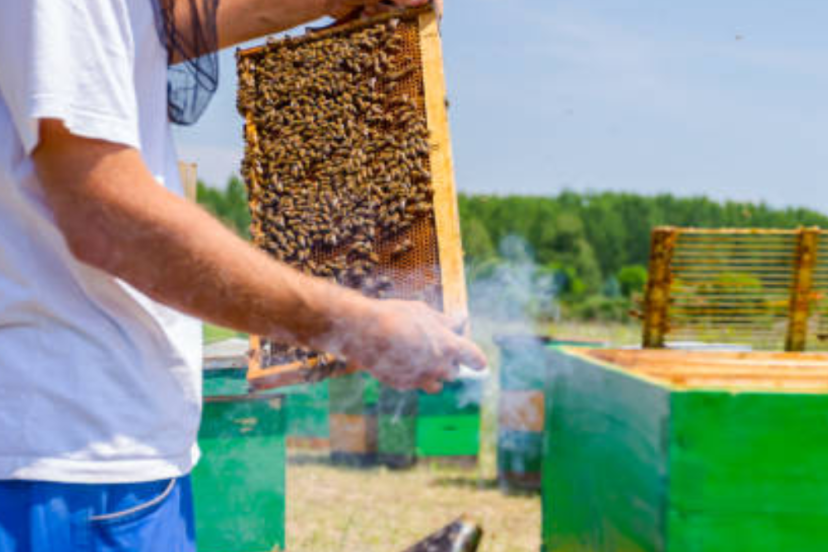Harvesting Culinary Delights through Home Beekeeping
In the world of culinary exploration, few pursuits are as rewarding and enriching as home beekeeping. Beyond the mesmerizing dance of bees and the ecological benefits, beekeeping offers a golden opportunity to harvest your own honey—a culinary delight with unparalleled flavor and versatility. In this article, we’ll dive into the art of home beekeeping, exploring the joys of tending to your hive and reaping the sweet rewards of harvesting honey for a range of culinary delights.
Embarking on the Beekeeping Adventure: Setting Up Your Hive
- Starting your journey into home beekeeping requires careful preparation and a commitment to creating a safe and nurturing environment for your bees. Begin by choosing the right hive—Langstroth, top-bar, or Warre, each with its unique features and advantages.
- Select a suitable location with ample sunlight, away from high-traffic areas but easily accessible for your regular inspections. Equip yourself with the necessary protective gear—a beekeeper’s suit, gloves, and a smoker for calming the bees during inspections. As you set up your hive, you’re laying the foundation for a journey that will not only provide honey but also foster a deeper connection with nature.
Choosing the Right Bees: Understanding Bee Species and Traits
- The honeybee world boasts several species, each with its characteristics. The Western Honeybee (Apis mellifera) is the most commonly kept species for honey production. Within this species, there are various subspecies and hybrids, each offering unique traits such as temperament, honey production, and winter hardiness.
- Research and choose bees that align with your climate and beekeeping goals. Italian bees, for instance, are known for their gentle nature, while Carniolan bees excel in colder climates. Consider your local environment and beekeeping objectives when selecting the right bees for your hive.
Maintaining a Healthy Hive: The Key to Abundant Honey Production
- A thriving hive is the key to a bountiful honey harvest. Regular hive inspections are essential to ensure the health and well-being of your bees. Look for signs of disease, pests, or a dwindling population, addressing issues promptly to maintain a robust hive.
- Provide your bees with a balanced diet by planting bee-friendly flowers, herbs, and trees around your apiary. This not only supports their nutritional needs but also enhances the flavor profile of your honey with diverse nectar sources.
Harvesting Honey: Timing Is Everything
- The magic moment in home beekeeping arrives when it’s time to harvest honey. Timing is crucial, as it ensures the bees have ample honey reserves for the winter. The ideal time for harvesting is typically in late summer or early fall when the honey supers are filled, and the bees are capping the honeycomb cells.
- Use a beekeeping tool like a bee brush or fume board to gently encourage the bees to vacate the honey supers. Once the supers are free of bees, you can begin the extraction process, reaping the sweet rewards of your beekeeping efforts.
Extracting Honey: From Hive to Jar
- The process of extracting honey involves removing the frames from the hive and carefully removing the wax cappings from the honeycomb cells. This can be done using a hot knife or a capping scratcher. Once the cappings are removed, place the frames in an extractor—a device that uses centrifugal force to spin the honey out of the comb.
- As the honey flows out, filter it through a fine mesh to remove any remaining wax particles. The liquid gold that emerges is your own homegrown honey, rich in flavor and imbued with the unique characteristics of the local flora your bees visited.
Savoring the Culinary Riches: Cooking and Baking with Homegrown Honey
- The honey you harvest from your home beekeeping endeavors is a culinary gem, distinct in flavor and texture from commercial varieties. Its unique terroir reflects the local landscape and the diverse array of flowers visited by your bees. This makes it a versatile ingredient that can elevate your culinary creations to new heights.
- Experiment with using honey in both sweet and savory dishes. Create a honey-glazed salmon, a balsamic honey reduction for salads, or a honey-infused vinaigrette. In baking, swap out sugar for honey in recipes to add depth and complexity to your favorite treats. The possibilities are endless, and your homegrown honey becomes a signature ingredient that showcases the essence of your beekeeping journey.
Infusing Honey: Elevating Flavor Profiles
- Take your culinary delights a step further by infusing your honey with herbs, spices, or botanicals. Infused honey adds an extra layer of complexity to dishes and beverages. Try infusing honey with lavender for a floral note, cinnamon for warmth, or chili peppers for a spicy kick.
- Experiment with different combinations to create unique infusions that suit your taste preferences. Infused honey also makes for thoughtful and personalized gifts, sharing the flavors of your beekeeping journey with friends and family.
Beyond the Jar: Beeswax Crafts and More
- Home beekeeping offers more than just honey—it provides an abundance of beeswax, a versatile material with various uses. Beeswax can be crafted into candles, balms, and even wraps for food preservation. Engage in beeswax crafting to make gifts, household items, or products to sell, expanding the reach of your beekeeping hobby.
Conclusion:
Home beekeeping is a journey of connection—with nature, with your local ecosystem, and with the culinary treasures that emerge from your hive. From the meticulous setup of your beekeeping environment to the magical moment of honey extraction, each step in this journey is a testament to the rewarding nature of this ancient practice.
As you savor the unique flavors of your homegrown honey and experiment with culinary creations, you’ll find that home beekeeping transcends a hobby—it becomes a way of life that enriches your palate, your kitchen, and your appreciation for the delicate dance of bees. Embrace the sweet rewards of home beekeeping and embark on a culinary journey that begins in your backyard hive.


Comments are closed.